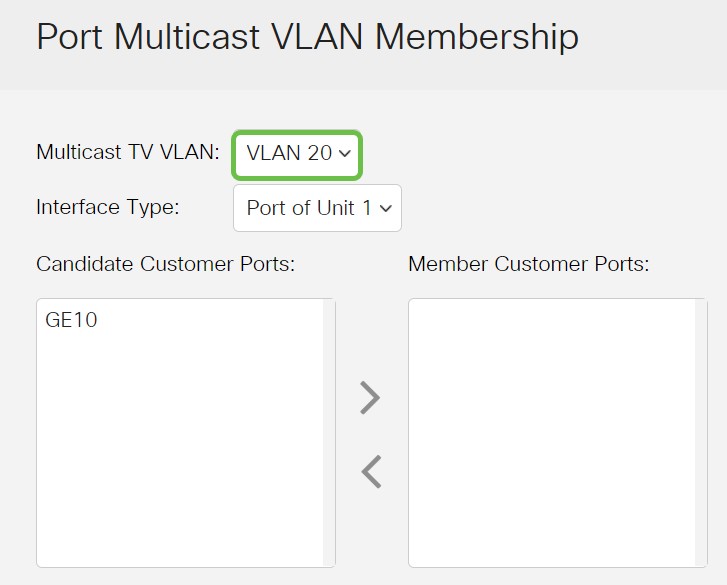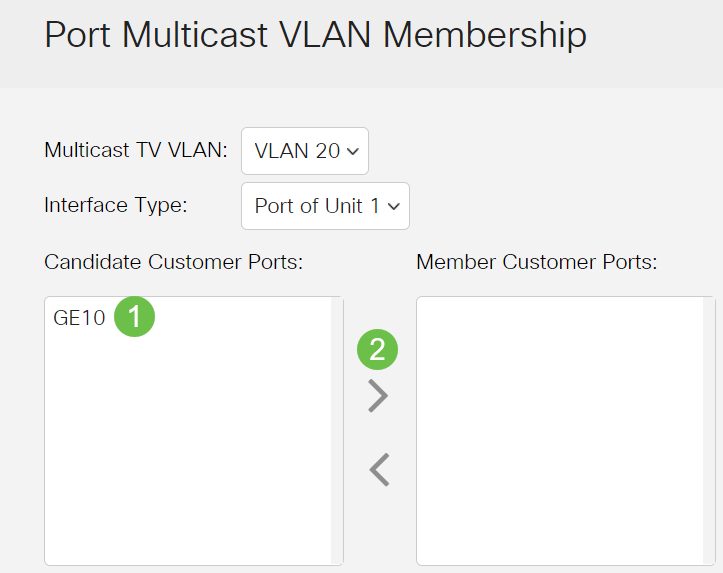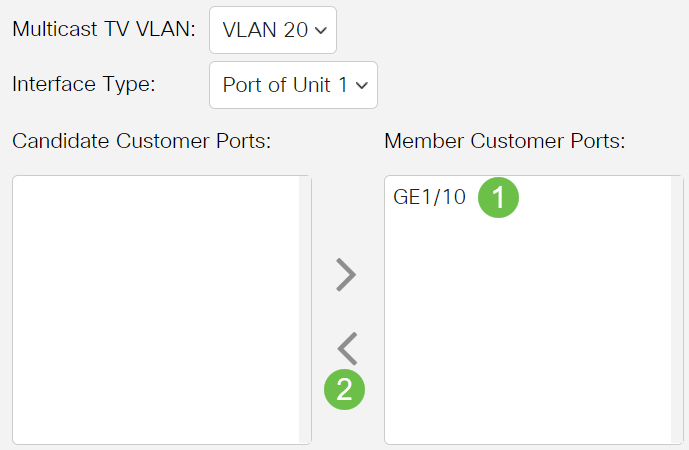Configure Customer Port Multicast TV Virtual Local Area Network (VLAN) Membership on a Cisco Business 350 Series Switch
Available Languages
Objective
A Virtual Local Area Network (VLAN) allows you to logically segment a Local Area Network (LAN) into different broadcast domains. In scenarios where sensitive data may be broadcast on a network, VLANs can be created to enhance security by designating a broadcast to a specific VLAN. Only users that belong to a VLAN are able to access and manipulate the data on that VLAN. VLANs can also be used to enhance performance by reducing the need to send broadcasts and multicasts to unnecessary destinations.
Multicast TV VLANs enable multicast transmissions to subscribers who are not on the same data VLAN without replicating the multicast transmission frames for each subscriber VLAN. Subscribers who are not on the same data VLAN and are connected to the device with different VLAN ID membership can share the same multicast stream by joining the ports to the same Multicast VLAN ID.
Port Multicast VLAN Membership connects a port configured for customer services to a Multicast TV VLAN. Configuration of Customer Port Multicast TV VLAN Membership helps maintain security by separating the transmissions between the source and receiver. Multicast VLAN configuration enables multicast traffic from a source VLAN to be shared with subscriber VLAN.
This article provides instructions on how to configure Customer Port Multicast VLAN Membership on a switch.
To know how to map multicast groups to VLANs, click here for instructions.
If you are unfamiliar with terms in this document, check out Cisco Business: Glossary of New Terms.
Applicable Devices | Software Version
- CBS350 (Data Sheet) | 3.0.0.69 (Download latest)
- CBS350-2X (Data Sheet) | 3.0.0.69 (Download latest)
- CBS350-4X (Data Sheet) | 3.0.0.69 (Download latest)
Configure Customer Port to Multicast VLAN Membership on the Switch
Add a Customer Port to a Multicast TV VLAN
Step 1
Log in to the web-based utility and choose Advanced from the Display Mode drop-down list.

Step 2
Choose VLAN Management > Customer Port Multicast TV VLAN > Port Multicast VLAN Membership.

Step 3
Choose a Multicast TV VLAN from the Multicast TV VLAN drop-down list.

Step 4
Choose an interface type from the Interface Type drop-down list.

The options are:
- Unit — The unit ID of unit (active, member, or standby) in the stack and number of ports available in it will be displayed in the Candidate Access Ports area.
- LAG — The several ports of the switch are combined to form a single group called a Link Aggregation Group (LAG). If this option is chosen, the available LAGs will be displayed in the Candidate Access Ports area.
Step 5
The Candidate Customer Ports list contains all customer ports configured on the device. Choose an interface then click the > button to move the ports to the Member Customer Ports area.
To learn how to configure VLAN interface settings on a switch, click here for instructions.

Step 6
Click Apply to save the configured settings in the running configuration file.

Step 7 (Optional)
Click Save to save settings to the startup configuration file.

You should now have configured a customer port to become a member of Multicast TV VLAN.
Remove a Customer Port from a Multicast TV VLAN
Step 1
In Member Customer Ports area, choose an interface then click the < button to move the ports back to the Candidate Customer Ports area.

Step 2
Click Apply to save the settings to the running configuration file.

Step 3 (Optional)
Click Save to save settings to the startup configuration file.

You should now have removed a customer port from the Multicast TV VLAN.
Looking for more information on VLANs for your Cisco Business Switches? Check out any of the following links for more information.
Revision History
| Revision | Publish Date | Comments |
|---|---|---|
1.0 |
26-Jan-2021 |
Initial Release |
Contact Cisco
- Open a Support Case

- (Requires a Cisco Service Contract)
 Feedback
Feedback